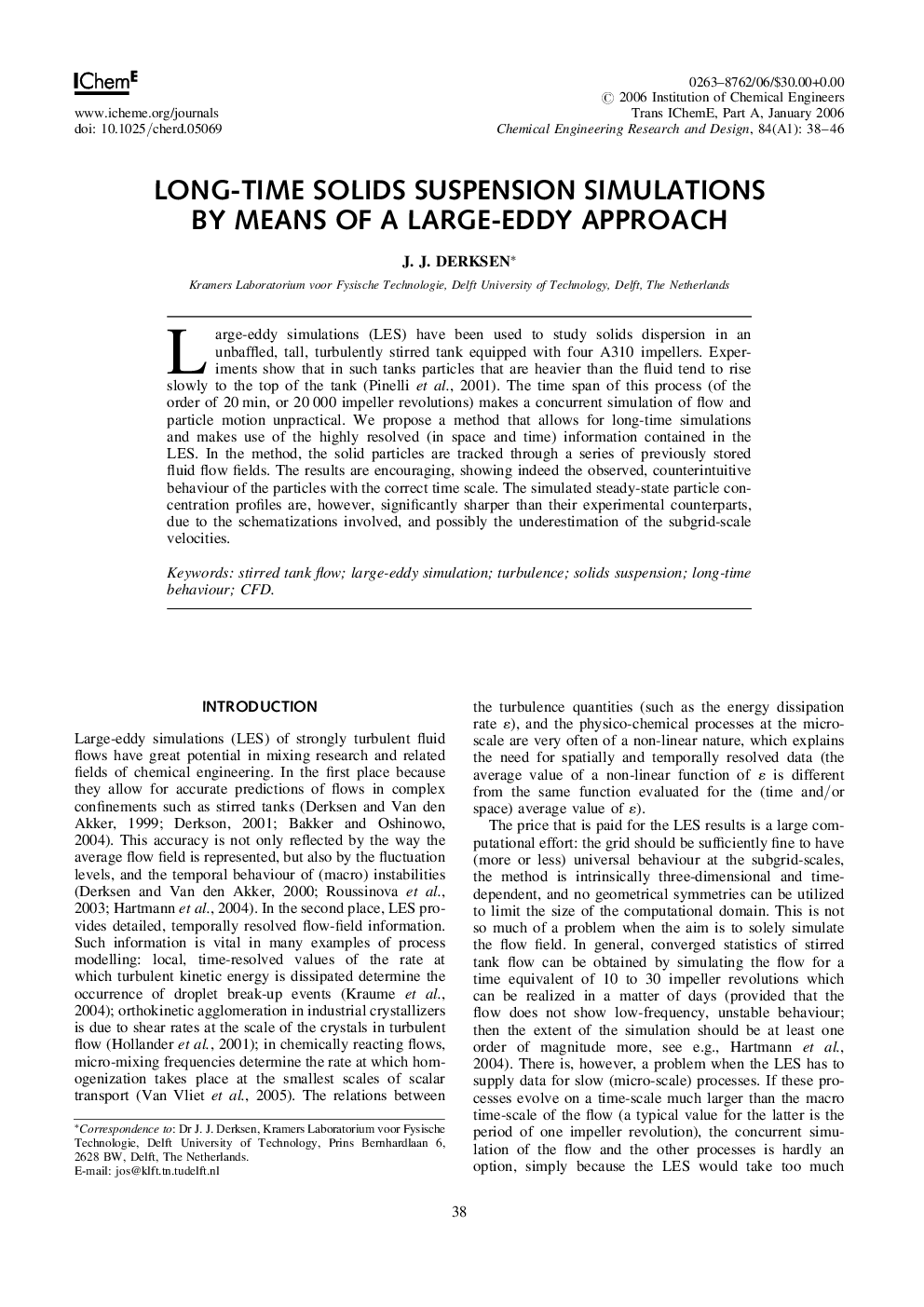| Article ID | Journal | Published Year | Pages | File Type |
|---|---|---|---|---|
| 621701 | Chemical Engineering Research and Design | 2006 | 9 Pages |
Abstract
Large-eddy simulations (LES) have been used to study solids dispersion in an unbaffled, tall, turbulently stirred tank equipped with four A310 impellers. Experiments show that in such tanks particles that are heavier than the fluid tend to rise slowly to the top of the tank (Pinelli et al., 2001). The time span of this process (of the order of 20 min, or 20 000 impeller revolutions) makes a concurrent simulation of flow and particle motion unpractical. We propose a method that allows for long-time simulations and makes use of the highly resolved (in space and time) information contained in the LES. In the method, the solid particles are tracked through a series of previously stored fluid flow fields. The results are encouraging, showing indeed the observed, counterintuitive behaviour of the particles with the correct time scale. The simulated steady-state particle concentration profiles are, however, significantly sharper than their experimental counterparts, due to the schematizations involved, and possibly the underestimation of the subgrid-scale velocities.
Related Topics
Physical Sciences and Engineering
Chemical Engineering
Filtration and Separation
Authors
J.J. Derksen,
